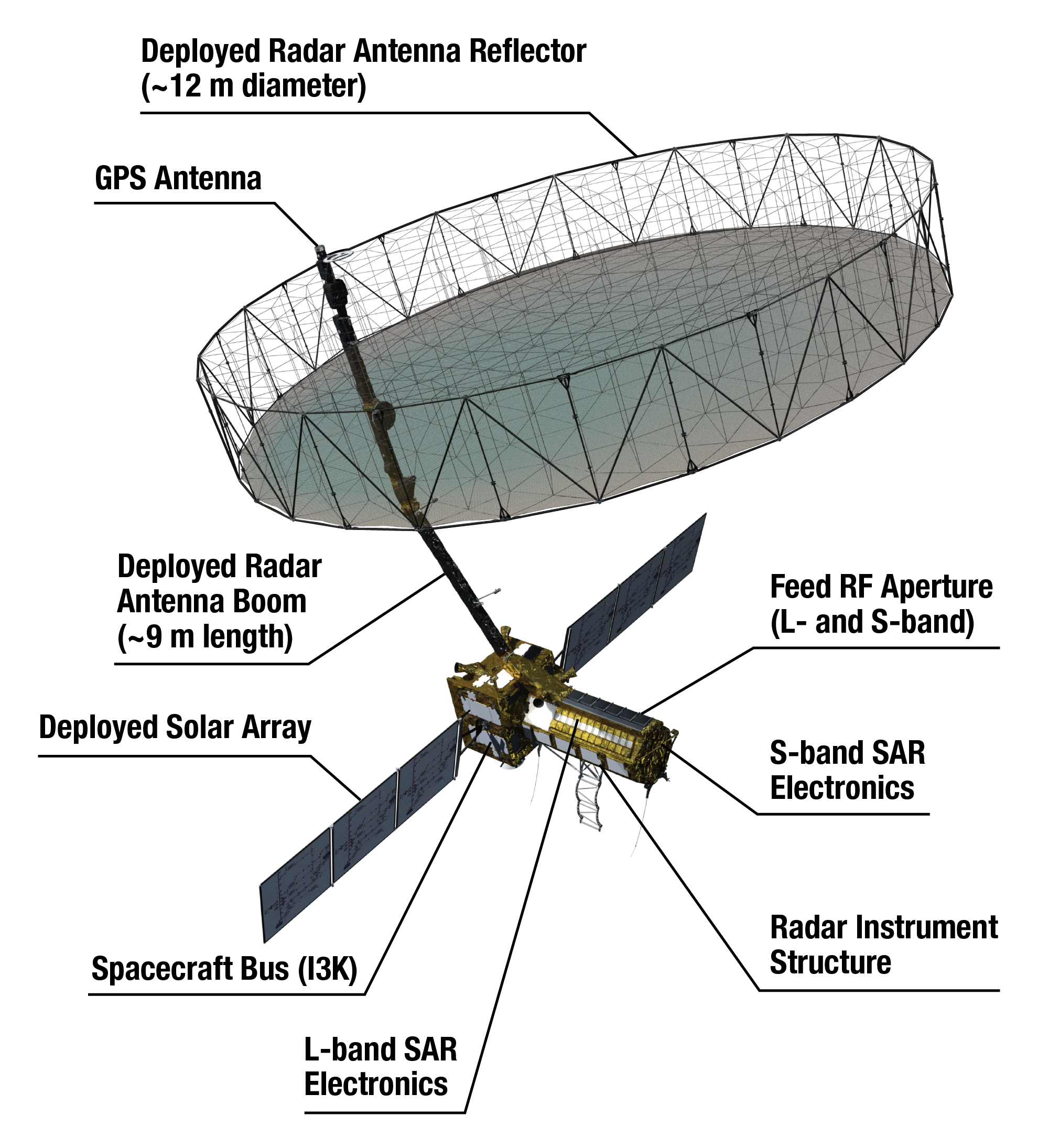NISAR
1. Context
Jointly developed by the National Aeronautics and Space Administration (NASA) and the Indian Space Research Organisation (ISRO), an Earth-observation satellite called NISAR (NASA-ISRO Synthetic Aperture Radar), got a send-off ceremony at the American space agency's Jet Propulsion Laboratory (JPL) in Southern California on February 3.
2. Key Points
- The SUV-size satellite will be shipped to India in a special cargo container flight later this month for a possible launch in 2024 from Satish Dhawan Space Centre in Andhra Pradesh.
- It is one step closer to fulfilling the immense scientific potential NASA and ISRO envisioned for NISAR joined forces more than eight years ago.
- This mission will be a powerful demonstration of the capability of radar as a science tool and help us study Earth's dynamic land and ice surfaces in greater detail than ever before.
3. About NISAR
- NISAR has been built by space agencies of the US and India under a partnership agreement signed in 2014.
- The 2, 800 kilograms satellite consists of both L-band and S-band synthetic aperture radar (SAR) instruments, making it a dual-frequency imaging radar satellite.
- While NASA has provided the L-band radar, GPS, a high-capacity solid-state recorder to store data and a payload data subsystem, ISRO has provided the S-band radar, the GSLV launch system and spacecraft.
|
Another important component of the satellite is its large 39-foot stationary antenna reflector.
Made of a gold-plated wire mesh, the reflector will be used to focus " the radar signals emitted and received by the upward-facing feed on the instrument structure".
|
Image Source: NASA
4. The Mission
- Once launched into space, NISAR will observe subtle changes in Earth's surfaces, helping researchers better understand the causes and consequences of such phenomena.
- It will spot warning signs of natural disasters, such as volcanic eruptions, earthquakes and landslides.
- The satellite will also measure groundwater levels, track flow rates of glaciers and ice sheets and monitor the planet's forest and agricultural regions, which can improve our understanding of carbon exchange.
|
By using synthetic aperture radar (SAR), NISAR will produce high-resolution images.
SAR is capable of penetrating clouds and can collect data day and night regardless of the weather conditions. The instrument's imaging Swath the width of the strip of data collected along the length of the orbit track is greater than 150 miles (240 kilometres), which allows it to image the entire Earth in 12 days. |
- NISAR is expected to be launched in January 2024 from Satish Dhawan Space Centre into a near-polar orbit.
- The satellite will operate for a minimum of three years.
- NASA requires the L-band radar for its global science operations for at least three years.
- Meanwhile, ISRO will utilise the S-band radar for a minimum of five years.
For Prelims & Mains
|
For Prelims: NISAR (NASA-ISRO Synthetic Aperture Radar), Satish Dhawan Space Centre, Earth-observation satellite, Jet Propulsion Laboratory, L-band and S-band synthetic aperture radar, GPS, GSLV launch system and spacecraft,
For Mains:
1. What is NISAR and Explain its benefits (250 Words)
|
Source: The Indian Express




